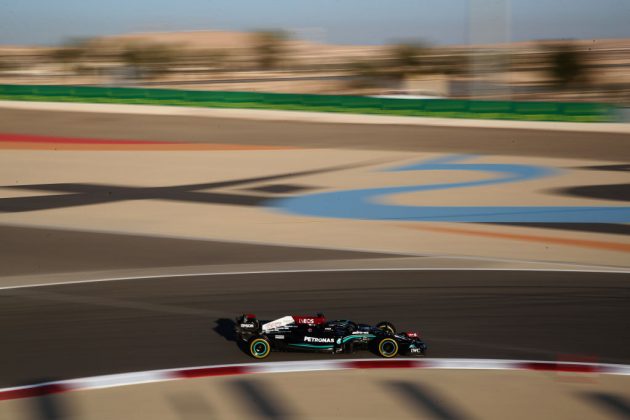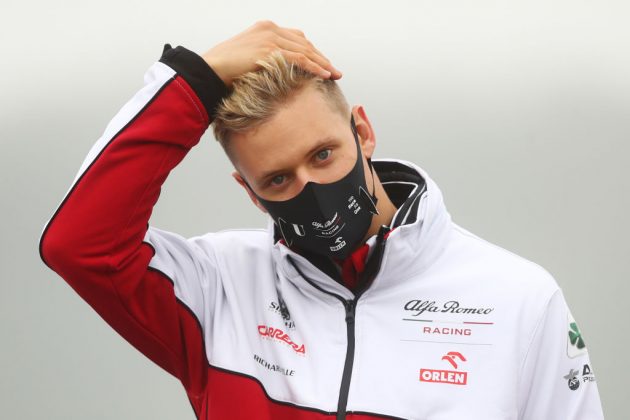A drive to survive: How Liberty Media used Netflix and esports to win a new generation of fans and safeguard the future of Formula 1

It feels like an awful long time ago now that Liberty Media took the wheel of Formula 1, completing a takeover valued at $8bn including debt in January 2017.
Donald Trump had just been inaugurated and the most relevant global health emergency was the Zika virus.
In motorsport, meanwhile, Lewis Hamilton had been dethroned and was a mere three-time world champion.
This weekend in Bahrain, Sir Lewis, as he is now, begins his seventh title defence.
F1’s new owners arrived with a mission: to attract new fans to a sporting property that was unhealthily white, male and middle-aged.
Liberty planned to do that by tapping digital resources neglected under the long reign of Bernie Ecclestone.
Ecclestone’s reluctance to embrace the possibilities of social media, for example, might seem hopelessly out of step now, but F1 weren’t the only sports property slow to the party: Manchester United, football’s commercial pioneers, were the last Premier League club to join Twitter, in 2013.
F1’s need to engage new audiences is uniquely acute; unlike other sports, it can’t rely on participation to spur interest.
“Its future success is therefore inextricably linked to ensuring new and younger audiences can and will consume its content,” says Neil Hopkins, global head of strategy at M&C Saatchi Sport and Entertainment.
Drive to Survive and Virtual Grands Prix
Four years on, the indications are that Liberty’s play for Generation Y and Z has worked.
Research by Nielsen Sports based on 10 key global markets found that 73m new people claimed interest in F1 in the last 12 months.
And they are mostly young: 77 per cent of those new fans were aged 16-35. That age bracket now represents 46 per cent of F1’s interest pool, up from 40 per cent in January 2020.
Those numbers back up trends identified by 2019 studies, which also showed that half of all new fans, and 46 of the total fanbase, were female.
Liberty’s approach to wooing the youth vote has been multi-faceted.
While F1’s retreat behind paywalls in the later years of the Ecclestone era naturally shrunk audience, growing it again wasn’t as simple as going back to free-to-air broadcasting.
“Younger audiences have long moved on into a more non-linear space where TV, social media and gaming constantly vie for their attention,” says Hopkins.
Instead, Liberty has harnessed streaming platforms and esports.
The popular Netflix documentary Drive to Survive, now in its third season, is credited with being particularly effective at attracting a more youthful demographic.
Liberty was quick to set up an official F1 Esports Series, which accrued more than 11m live streams last year, an increase of 98 per cent on 2019.

As real racing ground to a halt during the pandemic, F1 expanded its esports portfolio to include Virtual Grands Prix involving stars of the grid and other celebrities.
The 2020 Virtual Racing Series enjoyed a total viewership of more than 33m, Nielsen found. No wonder, then, that it was retained for 2021.
The appointment of more women to senior roles, such as marketing and communications director Ellie Norman, and the recent incorporation of the W Series into F1 race weekends have been cited as reasons for the even gender split among new fans.
Digital brands become major F1 sponsors
All this engagement is, of course, welcome, but F1 needs to monetise it.
Generation Y and Z have a reputation for expecting everything for free – potentially bad news at a time when races have never been less accessible on terrestrial television.
And F1 does need the money. It had $3.7bn of debt at the end of 2020 and made a loss of $386m last year as it scrambled to complete a 17-race season while fans remained locked out.
The good news is that new eyeballs have brought new sponsors to the sport.
“What is undoubtedly true is that F1’s success in attracting a younger audience will help maintain its evergreen appeal in the global sponsorship market,” says Hopkins.
In particular, Nielsen Sports’ head of rights holders Tom McCormack highlights “growth in the number of digital service providers joining F1’s sponsorship landscape”.
These include Cognizant partnering with Aston Martin, Cisco Webex with McLaren and cybersecurity firm Herjavec’s tie-up with F1 itself.
Telecoms and technology was the third biggest contributor to F1 team commercial revenues in 2019, at 13.5 per cent, according to industry monitor Formula Money.
“We expect to see more entrants from this sector as the 2021 season progresses,” adds McCormack.
Micro-transactions and budget caps
And there may be money in paid-for content aimed at F1’s newer fans after all.
“It’s a common misconception that younger consumers don’t want to pay for content,” says Hopkins.
They may be reluctant to commit to monthly subscriptions but they will fork out if content is offered on a more flexible basis, he adds.
“The way to optimise revenue from these audiences is therefore likely to involve more micro-transactions than fixed-terms contracts and this is where the potential for atomising content of a sport like F1 could prove highly lucrative.”
F1 faces other existential threats, of course, not least its perceived predictability.
Since Liberty’s takeover, Hamilton has won all four world championships, while his Mercedes team have triumphed in 51 of the 79 grands prix.
Concern about the dominance of one team or driver, though, are nothing new.
A 1995 article from Autosport magazine, around the time Michael Schumacher was emerging as a generational force, features industry figures bemoaning the same problem.

New rules due to take effect next year offer hope of a solution, or at least a step in the right direction.
From 2022, team budgets will be capped at $145m, around a third of what Mercedes currently spend, while new aerodynamics regulations also promise to shake up the grid.
For those new fans, there is also a new generation of young drivers which includes Red Bull star Max Verstappen (23), Ferrari’s Charles Leclerc (23), Brits Lando Norris (21) and George Russell (23) – and Schumacher’s son, Mick (22).
“Change is coming,” says Hopkins. “If it has the desired effect of increasing competitiveness then F1 could see a further increase in its popularity with audiences and commercial partners.”
